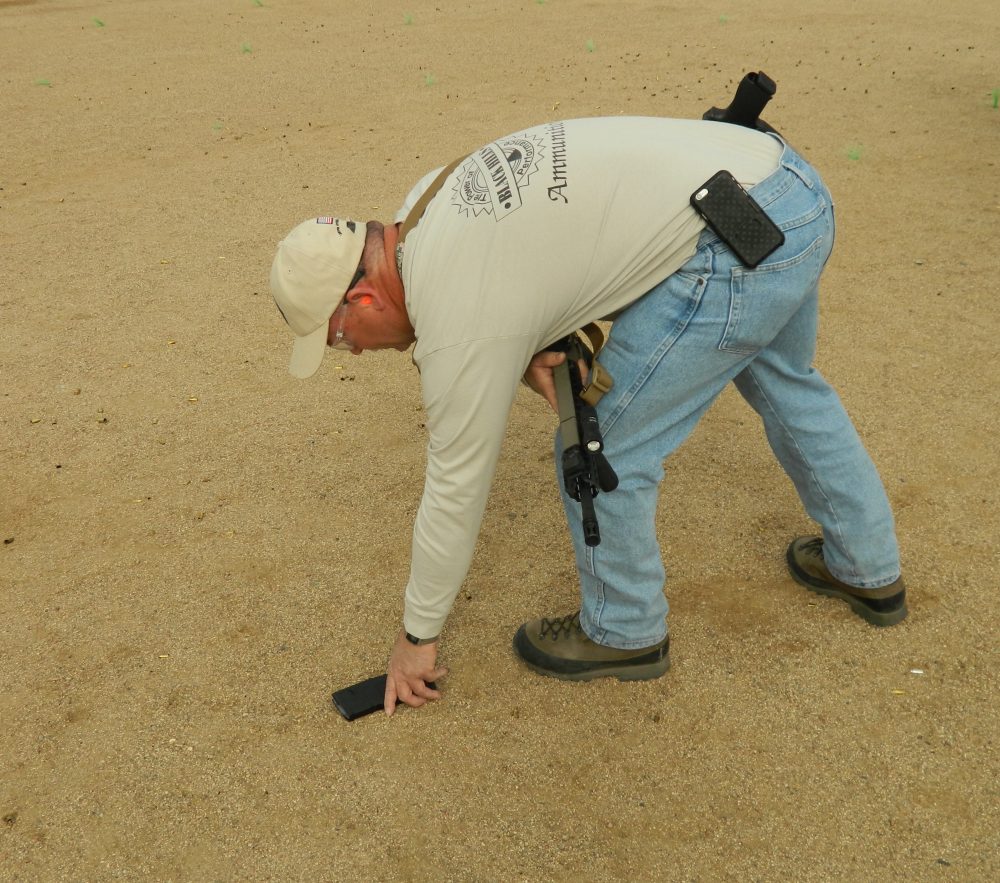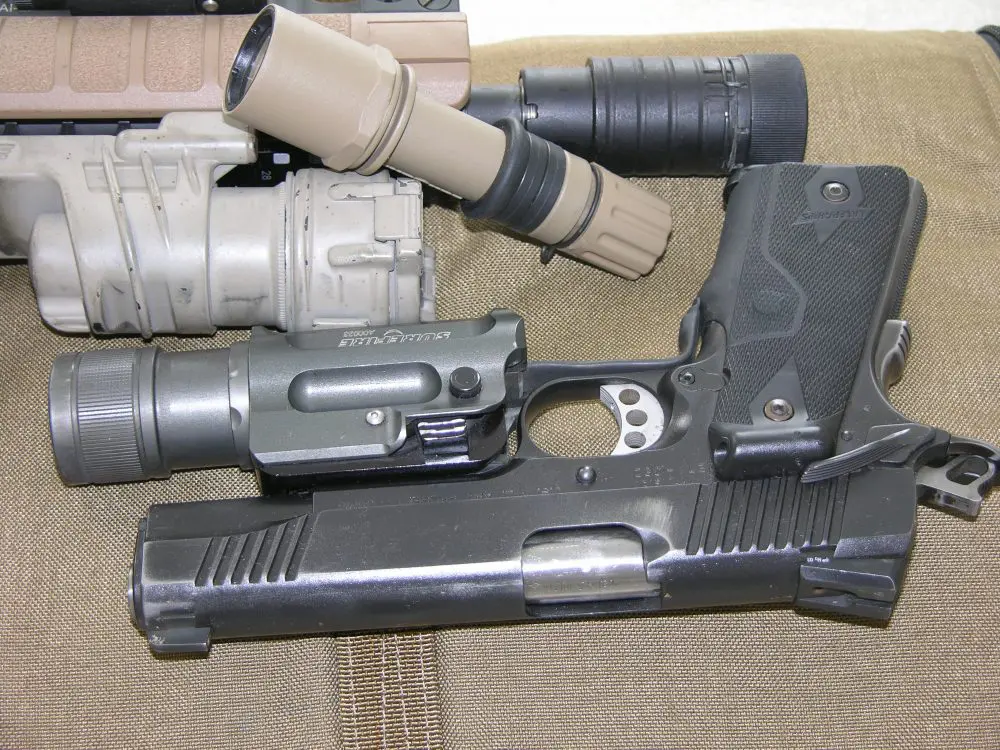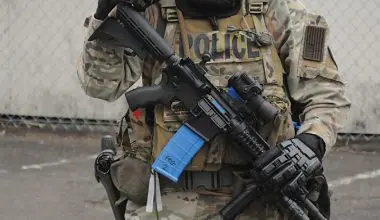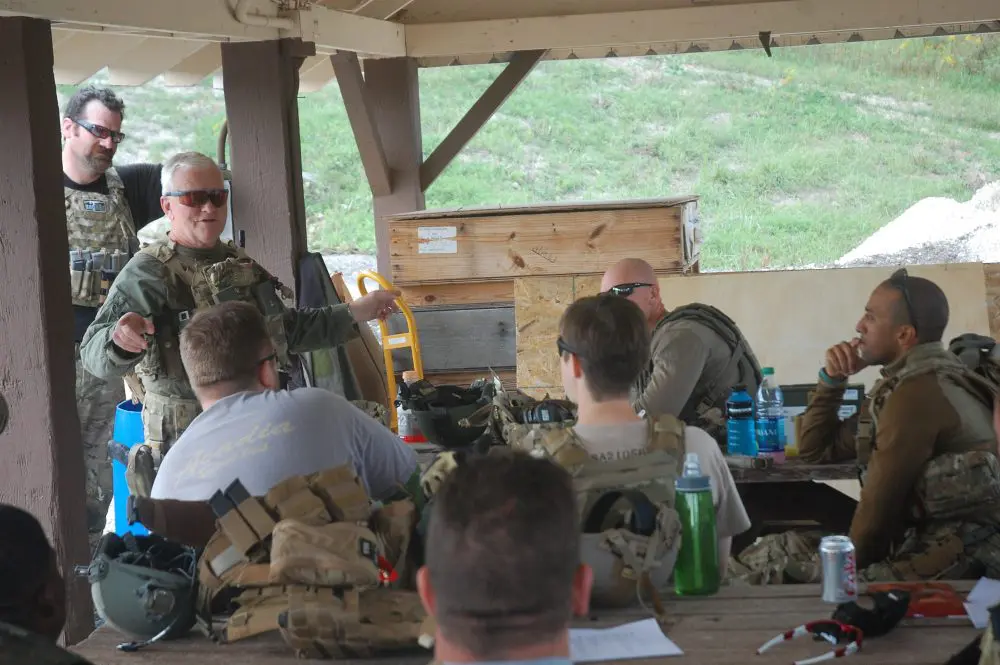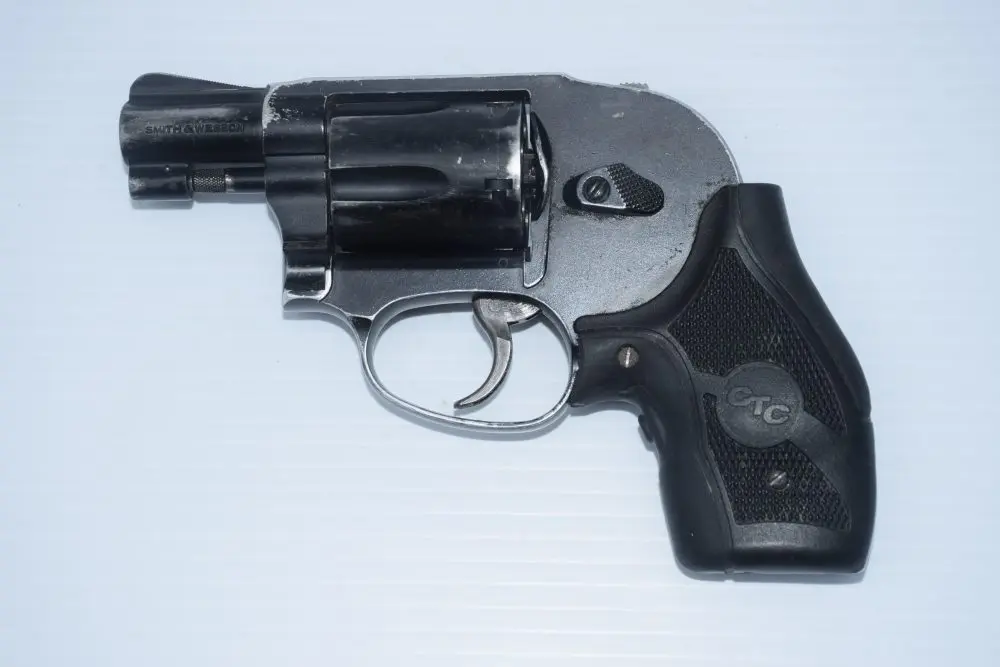

Everyone loves shooting steel. How’s that for a bold, declarative generalization? But it’s a safe one among shooters. The “Pow! … Ding!” or “Boom! … Clang!” of steel is addictive, enjoyable, and useful.
For years, large established companies that catered mostly to agencies cornered the market: military units and clubs on one end and often low-quality local fabrications on the other.
As the shooting market has exploded in the last few years, there has been a corresponding rise in steel target providers aimed at the individual shooter. One of the fastest growing of these has been Renaissance Steel Research out of North Carolina. I’ve recently been pounding one of their Ready Ship Targets (RST).
Table of Contents
READY SHIP TARGET
The RST was designed from the start to bypass the Achilles heel of steel: shipping costs. With other makers, I have more than once filled the shopping cart with targetry only to wave off when the shipping costs were calculated at checkout. In some cases, the freight alone puts the cost at a significant investment that is difficult to accept or recoup.
The RST was designed around United States Postal Service flat-rate shipping, and the freight is incorporated into the sticker price of the target. Every square inch of the flatrate box is maximized to fit a multi-function base, 2×4 post cap bracket, hanger plate, hardware, and RST target face. Humpty Dumpty goes back together again in five minutes with carriage bolts.
The shooter supplies a standard 2×4 post cut to the desired length. The base is large enough to give a stable platform on varied footing and accepts the 2×4 as well as having brackets for standard 1x2s to use for paper targets—a nice touch.
The target hangs at a slight angle titled toward the shooter to guide the deflecting projectiles into the deck. This arrangement puts some lead or jacket fragments harmlessly into the supporting 2×4 post, with the majority cutting a line in the soil directly underneath the target perpendicular to the shooter. It is extremely unusual to get splatter, fragments, or bounce-back with a target at such an angle, and the RST hanger bracket keeps the steel fixed on the perpendicular even as it swings freely back toward the wood post upon impact.
The RST looks immediately familiar to most shooters. Its shape shares the general outline of the B/C zone of a USPSA/IPSC target. But the 3/8ths thick AR 500 steel target measures 10×20 inches, whereas the B/C zone tapes at 12×24 inches.

DESIGN PARAMETERS
Danny Domin, founder of RSR, is a former Recon Marine, Ramadi vet, and security contractor. His design parameters on the Ready Ship Target were to make the box with a shape that was functional for a variety of combat shooting tasks—not too small, not too large. I give it an A+.
The B/C zone has always struck me as too sloppy for most tasks inside 100 yards, while the A zone or an eight-inch circle is perhaps too small for aggressive speed work, some shooting on the move, and unsupported carbine snap shots in the 75- to 200-yard bracket.
The RST splits the difference magnificently, at approximately 71% of the surface area of the standard IPSC zone. The 10×20 zone is a much better representation of the vital organs than a B/C. An edge hit on a C zone likely corresponds with a miss or burn along the rib cage on 90% of the developing world’s military-age population. The RST size gets a shooter toward the vitals inside the ribs on most target angles aside from a hard 90-degree profile.
The Ready Ship Target is easily visible behind the front sight to 200 yards even on medium-contrast backgrounds. I’ve used it out to 400 with an Aimpoint, but the light and contrast were favorable—and needed to be to make it out.
The target is a great training match to tasks where the shooter is trying to max out speed but still get an effective hit. Tasks like lateral or oblique movement, where many shooters struggle to find a balance between aggressive movement and delivering hits, are well suited to the mid-size zone of the RST.
With the steel giving instant feedback for correction or encouragement, the shooter tends to improve quickly. The target swings backward a few inches so the shooter picks up movement, but the hanger arrangement keeps the RST face square with the shooter, keeping rapid follow-up shots on the moving steel.
DRILLS
I asked Danny what his favorite RST drills are, and the first one he ponied up was a carbine challenge: One hit from a relaxed patrol or carry posture in one second at 50 yards. That’s fast. It’s a high-end drill that requires the shooter to smooth all the kinks out and have the shot breaking as soon as the dot or sights come onto the RST.
It ate my lunch for a couple of sessions, with times hovering in the one-teens. But the whole point of a challenge is rising to it, so I tweaked a few things and finally started ringing the RST around .98 with American Gunner 55 grainers out of a ROBAR PolymAR 15L.
Dovetailing off of the Snap Drill above, I wanted to see if I could get a pair on the RST in 1.5 seconds from the ready, again at 50 yards.
Getting the two hits requires a smooth snap to the first shot and tracking the dot/front sight back to center, taking up the slack in the trigger as soon as the sight picture arcs back onto “meat.” There is just enough time that if the shooter gets a good launch and has good recovery, the dot may be able to pause at center and hold while he presses past the final resistance on the trigger.
Where the first drill has the shooter pushing at the edge, the pair is synched to smooth delivery. Comfortable yet aggressive performance and 99% success with the ROBAR. With a nine-inch BCM .300 Blackout AR Pistol, I had to push to recover the dot in time to get “Ding!” number two with Black Hills 125-grain Open Tip Match rounds.

The target is exceptionally well suited to mid-tempo standing shots in the 75- to 100-yard bracket. There is enough target that most skill levels can work for a hit, but can’t assume one with poor technique.
I also like it equally well for kneeling and barricade work at 200 yards, the ten-inch width being slightly more difficult than clipping the black on a B8 5.5-inch bull at 100. The 20-inch length of the RST gives the shooter the illusion of “this isn’t that hard” and corresponding confidence to press the shot cleanly, but the ten-inch width keeps the hits honest.
RST WITH PISTOLS
For pistol work, I have used the RST for speeding up presentation from the holster and movement up close, but I am really liking it for distance. The Ready Ship gives a comfortable sight picture at 35 yards and enough surface area to accept slight imperfections in alignment or placement. The time hack to chip the spray paint off the steel is 2.5 seconds from the ready. Doable for most if their sights are regulated and they stop making excuses.
I’ve shot a variety of field handguns on the target out to 100 yards, and the RST head box makes a great aiming point to stack onto the front sight and let the magnum rounds drop right into center. Getting a “Bong!” drifting back is heavy satisfaction.
The RST steel is top-quality AR 500. Not surprising, since the company had its roots in MRAP armored vehicle production. My Ready Ship is holding up well after five months of hard use. I’ve put thousands of rounds on it, most at higher impact velocities than it’s rated for.
Some fret about the carriage bolt attachment points— I did too, honestly. I’ve only mangled the head on one of the carriage bolts, and that was a too-easy replacement at my convenience several range sessions later.
I’ve had the pleasure to shoot large quantities of the best institutional-grade steel targets from all the big makers. The RST is taking the punishment as good as any I’ve shot. Cost is $180.00 with free shipping.
STEEL I SMS
A shooter has to accept a few expectation management items with steel. First, nearly every maker plainly states that impact velocity needs to be kept below 3,000 feet-per-second. Many say that rifles must not be shot nearer than 100 yards.
Most shooters, myself included, proceed to shoot their 5.56 bulk buy, XM 193-type loads at about 50 yards, which from a 16-inch barrel slams the target at right about 3,000 fps. Almost any AR 500 will slightly dimple from this. Overlapping dimples eventually lead to little pocks. It is a “failure to follow simple instructions” situation where the shooter can enjoy steel at 50 yards and accept dimpling, or push the steel out to 100+ yards where the impact velocity doesn’t affect the steel.

The second is XM 109, or “Green Tip.” The projectile design incorporates a steel penetrator. It shouldn’t take an etymologist to realize that such a round is probably not going to treat a steel target gently. It won’t. If you look at closed-tothe- public contract ranges that have top-shelf steel but Green Tip shooting customers, the steel looks horrific in short order.
Friends don’t shoot friends’ steel targets with Green Tip.
When you shoot steel, spray paint becomes a key part of the experience. Buy quality and don’t be penny wise/pound foolish. I have had great results with Rustoleum industrialsize cans: great coverage, decent dry time, and a can gets through multiple training days. The .99-cent specials have lousy coverage, barely cover the last hits, and rarely last a day.
Color matters. White is probably the default, but it has some issues. White steel is overly reflective on bright days and gets distractingly “dirty” with shot marks quickly, leading to poor contrast for sight picture.
I am increasingly gravitating to almond-colored paint (Rustoleum 7570), which is pretty close to the buff color on traditional paper bullseyes. It offers good contrast against sights on the one end and vegetation or a gray dirt berm on the other. The almond shows hits well through an optic at distance but doesn’t get as high contrast messy as white. But it’s not so good against a clay or brown berm.
I sometimes hit the top of the head box and the post under the target with a touch of blaze orange paint to help when contrast is poor.

